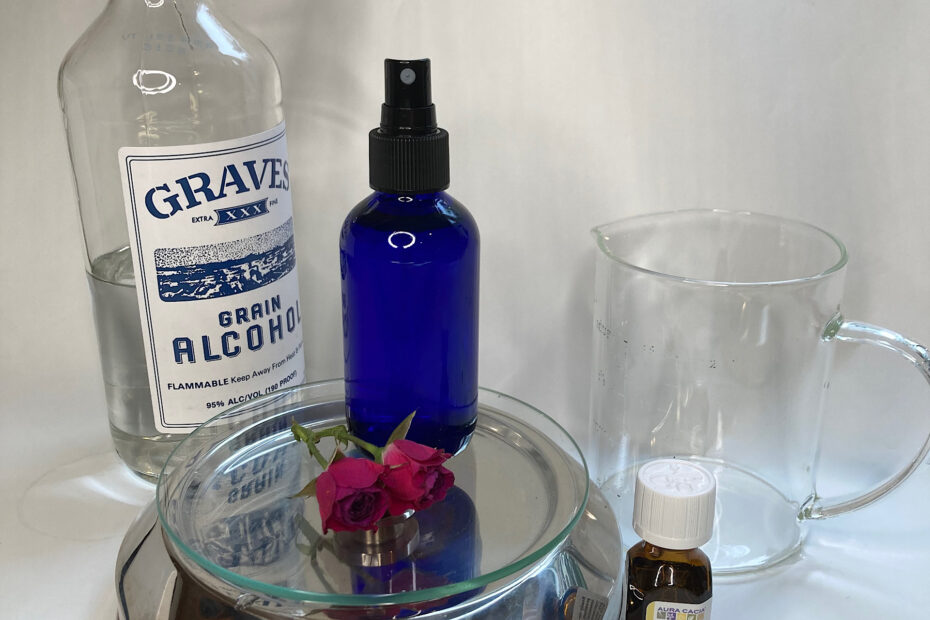I am always seeking the best clean fragrance options for my home: natural, nontoxic, clean scent choices. This goes for cleaning products as well as candles and room fragrances. Knowing your ingredients is key. For example, when purchasing commercial room fresheners, you have little choice in your exposure to aerosols and a variety of chemical pollutants. For this reason, I opted to try my own room spray formulation. After quite a bit of research, I settled on using a distilled water/grain alcohol base enhanced with quality essential oils.
Why choose Grain Alcohol As A Base For Room Fragrance?
This formulation is simple and clean. By clean, I mean a grain alcohol (or ethanol) base is antimicrobial and will act as a preservative. You may see online room fragrance tutorials suggesting a water base. Water can be a breeding ground for unwanted microbes. Using distilled water is an option, but there are still microorganisms that can grow in distilled water. When the proper ratio and concentration of grain alcohol is used with distilled water as a room fragrance base, the grain alcohol can kill a variety of bacteria, as well as prevent microbial growth in the spray bottle.

Beyond the eco-friendly, sanitizing benefits of this formula, creating your own room spray also gives you control over the fragrance blend. Grain alcohol (ethanol) serves well to dissolve essential oils in a spray formulation containing water. If you have ever made your own salad dressing, you know the old saying that oil and water don’t mix. You can shake to combine them, but eventually, they will separate again into their own layers. Grain alcohol acts as a solubilizer to dissolve the essential oil and allow it to stay blended in your formulation.
Although the ingredients in this mixture are very basic, there are still elements of caution. Because of the grain alcohol (ethanol) content and volatile essential oil component, this formula should never be ingested. Take precautions as you would with any cleanser or room freshener not to directly inhale and do keep out of reach of children. Also, be careful when making this room spray formulation on wood surfaces and countertops. Alcohol and some essential oils are solvents.
Essential Oil Fragrance Choice
Essential oils are the go-to fragrance choice for published articles on room fragrance formulations. They have been used by many cultures around the world for centuries. Medical institutions are still studying their value. It’s important to understand, however, that essential oils still are not regulated by the FDA and their quality varies greatly. You might enjoy this article’s pointers on selecting a quality essential oil.
In simple terms, essential oils are concentrated plant extracts obtained through pressing or distilling. They retain the natural smell and flavor of their source. Bear in mind that essential oils are highly potent. You should research prior to selecting the essential oil that’s right for you.
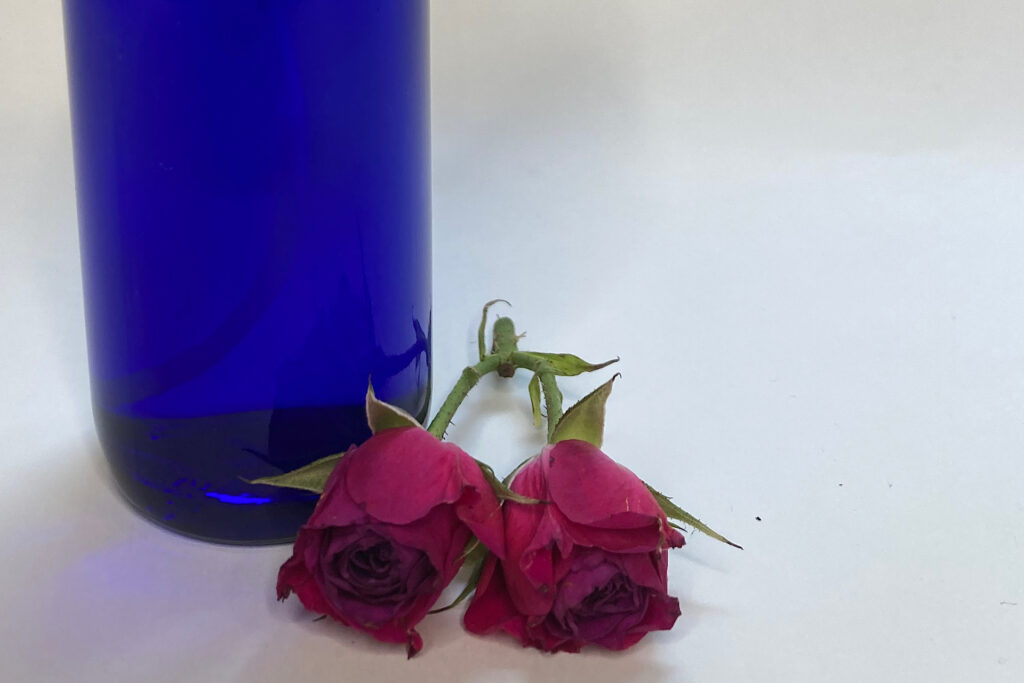
(Disclosure: Late Bloomer in Bakerville is a participant in the Amazon Services LLC Associates Program, an affiliate advertising program designed to provide a way for websites to earn advertising revenues by advertising and linking to Amazon.com )
When making an essential oil fragrance choice, I would recommend beginning with a single scent that you trust and truly enjoy before trying to blend fragrances. I highly suggest visiting a store that carries brands you can sniff before purchasing. Our local Whole Foods has a display where you can remove caps and get an idea of the scent you’re dealing with. Don’t discard this recommendation. Before mixing my formula, I had a rose/bergamot combination in mind. I like this blend in candles and other perfume choices. When testing them in the store, I much preferred the rose. I also purchased a lemon essential oil for my kitchen room fragrance formulation. By sampling first, I saved myself money and did not open a new bottle that I could no longer return.
Benefits of a Natural Room Fragrance Formulation
- Ecofriendly Choice: Free of aerosols & harsh/toxic chemicals found in commercial room fresheners.
- Basic Formulation: Knowledge of the substances you are exposed to. Full ingredient disclosure.
- Clean Aromatherapy: Free of synthetic fragrance ingredients and secondary pollutants.
- Creativity: Provides opportunity to dabble in scent and fragrance. Good intro to perfumery if you do your homework.
What is the Shelf Life of a DIY Room Fragrance?
Formulation is key. Just because your mixture contains natural, clean ingredients, does not make it effective or safe. This is why the mix ratios are so important. They ensure your formula is “solubilized” and “cidal.” Meaning, it has dissolved the essential oils so they will not separate, and the alcohol content is high enough that it will kill microbes and bacteria that would otherwise grow in your mixture. Distilled water is your best choice and seek out high quality essential oils. You won’t want to use “fragrance oils. Fragrance oils are manufactured in a laboratory and may contain synthetic elements to mimic scent, while essential oils are plant extracts.
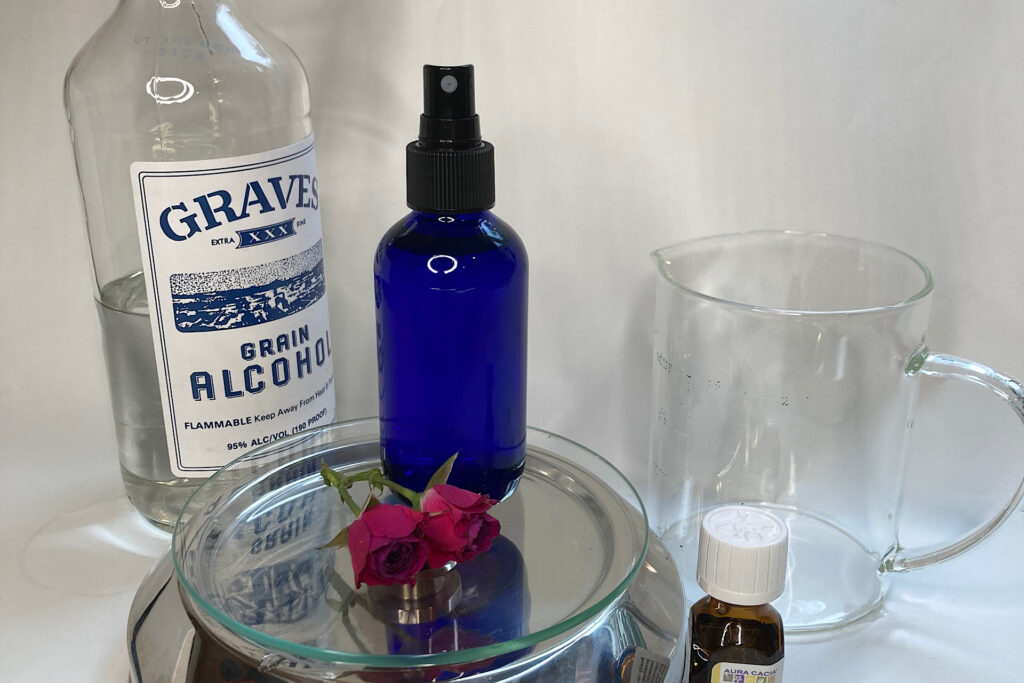
Measure accurately to ensure your formulation maintains preservation qualities and allows essential oils to dissolve. To dissolve essential oils, the grain alcohol has to be 90-100% ethanol. Bear in mind, the “proof” on a bottle of alcohol reflects only half the ethanol content. Therefore, a 100-proof bottle of vodka is 50% ethanol.
I chose a 190 proof grain alcohol (95% ethanol). The 95% ethanol concentration also works as a preservative to prevent microbial growth in the spray container. The CDC recommends 60% for germ-killing, so we’re safe there.
Bottling and Storing DIY Room Spray Formulation
This is where your creativity comes in. Choose the size of your bottle based on your own taste. I personally like these 4 oz bottles, again from Whole Foods. They are the perfect size for the ledge in my downstairs powder room and the kitchen or master bath countertop. If you select a different size container than the one I used in this recipe, you’ll need to calculate and adjust accordingly.
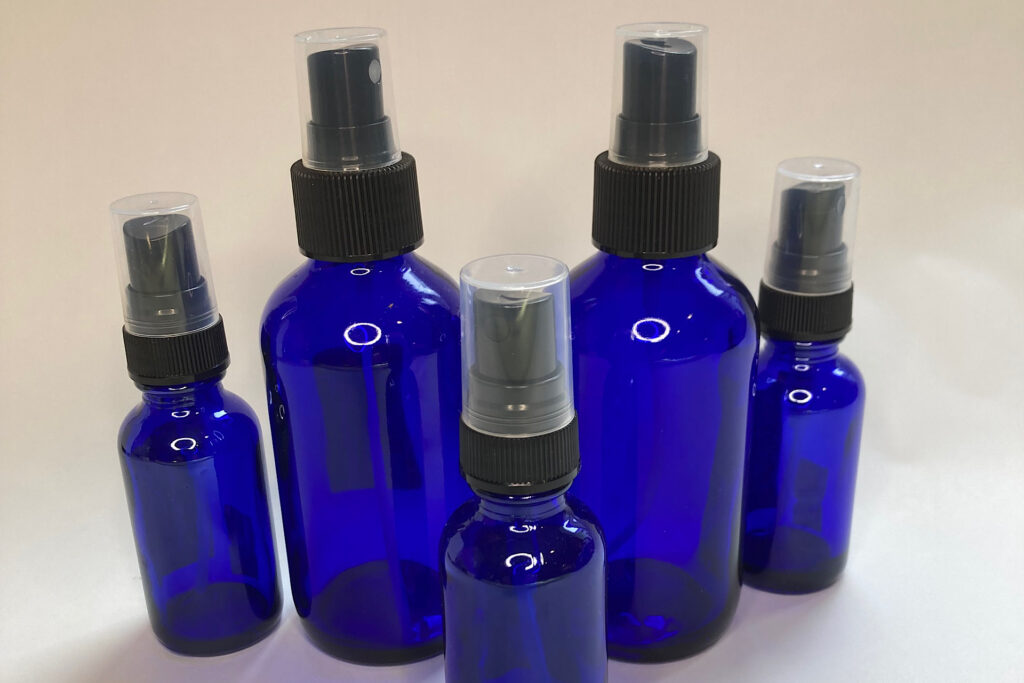
Equipment Needed
- 4 oz. spray bottle
- Kitchen scale (set to grams)
- 190-proof grain alcohol
- Essential oil of your choice
- Distilled water
- Small kitchen funnel (optional)
Measuring / Mixing a DIY Room Spray Formulation
Clean/sanitize all bottling equipment thoroughly.
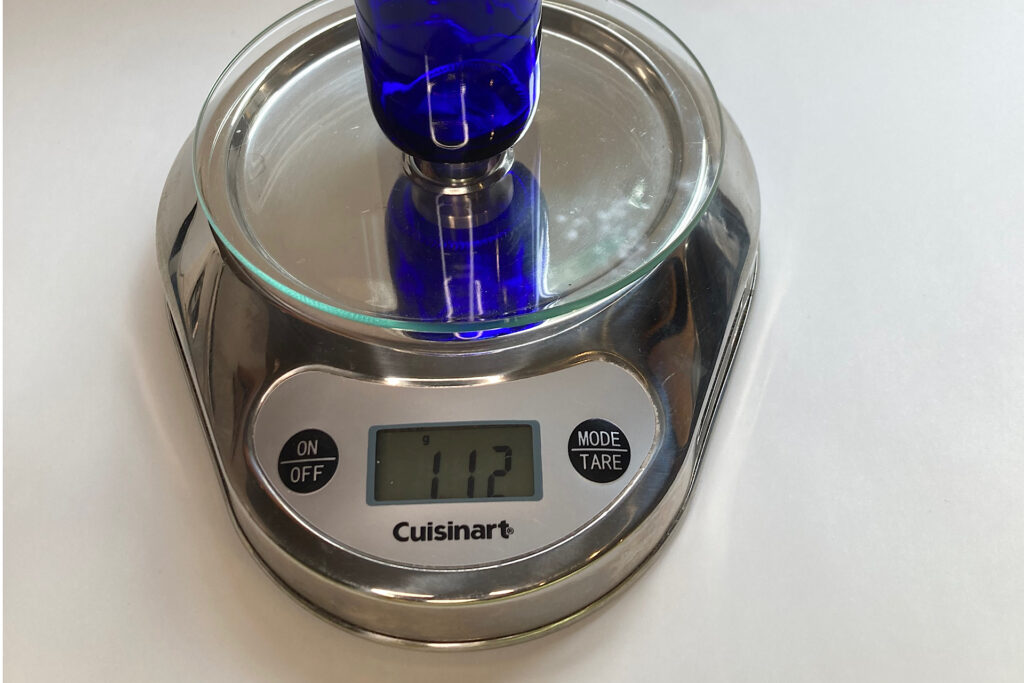
I used a brand-new bottle and sterilized it by filling it just 1/3 of the way with grain alcohol and swishing/dumping the contents.
Weigh your bottle before filling. Mine weighed out empty at 112 grams.
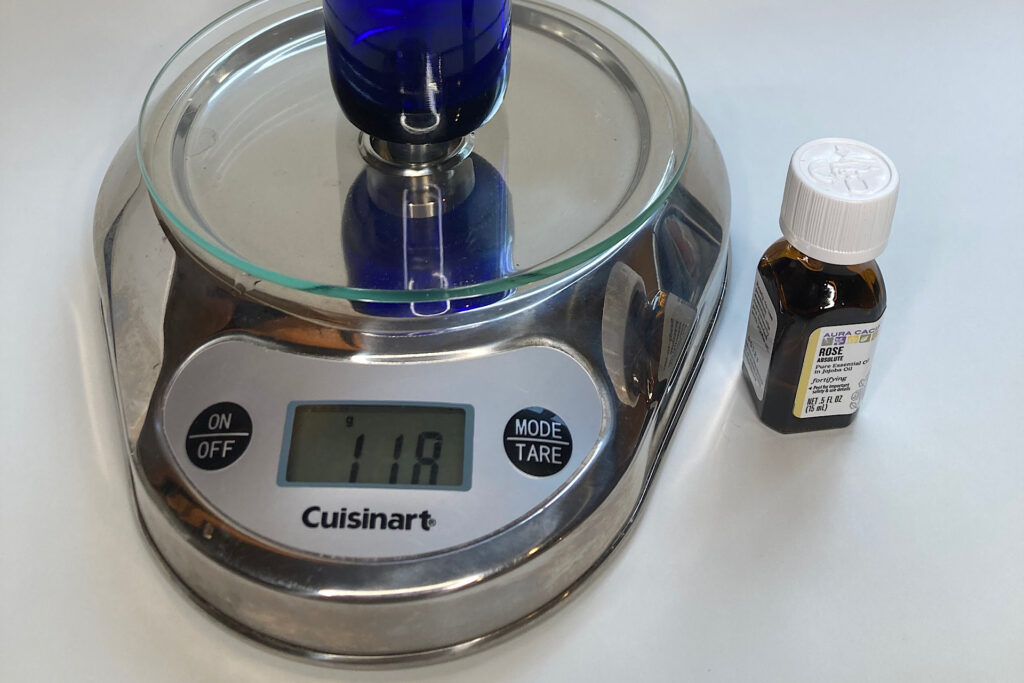
Add 6 grams of essential oil to the empty bottle. Bringing weight to 118 grams.
This is a LOT of essential oil drops! (Various articles recommend various amounts of oils. You’ll have to experiment depending on oil brand and quality. I found my lemon oil to be stronger than the rose choice.
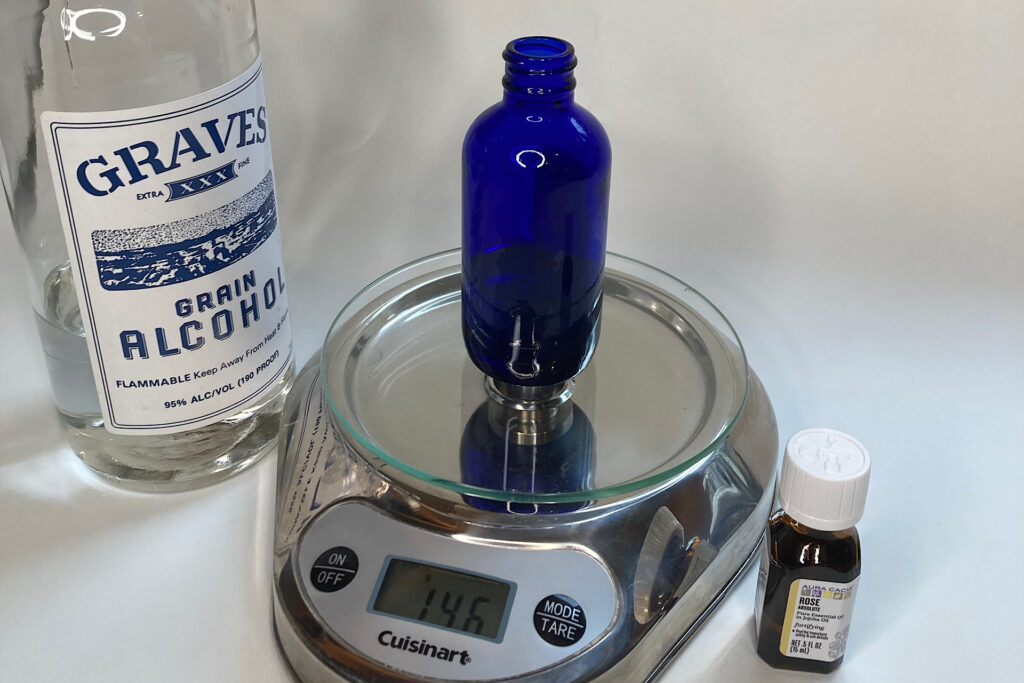
Add 28 grams of grain alcohol (ethanol). This brought my total weight to 146 grams.
When doing that deeper dive into fragrance articles, I found a tip to let the alcohol/oil mix sit for a while so the oils can dissolve. After blending the two, I put the cap on and let it set for a couple of hours.
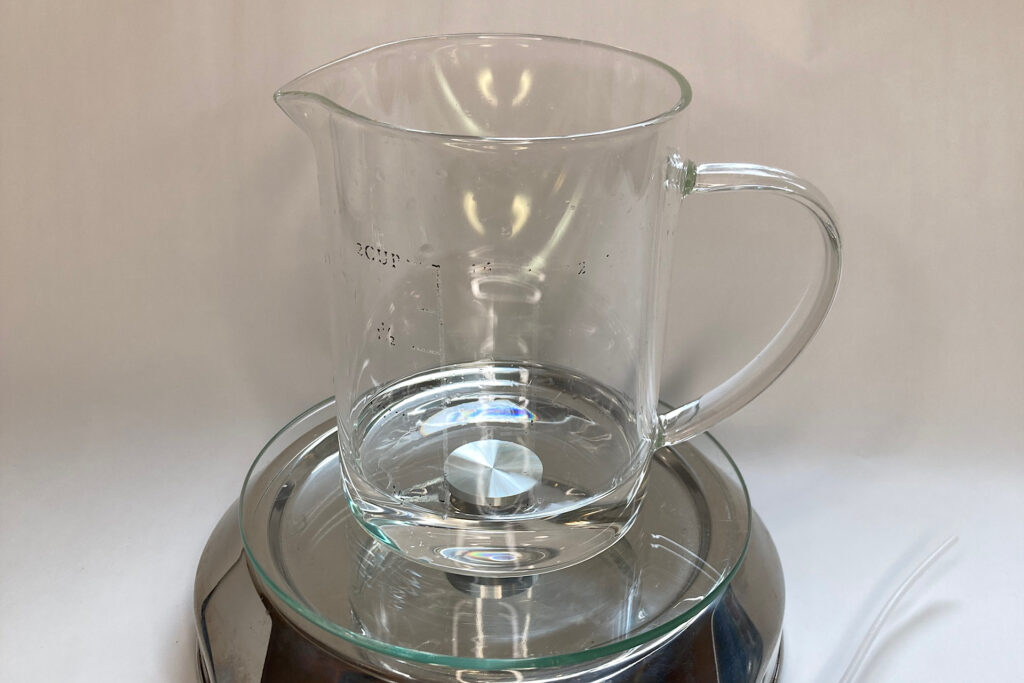
Slowly pour in 82 grams of distilled water. My total finished weight was 222 grams. Mix thoroughly.
I hope you enjoy this DIY room spray formulation. I’d love to hear your fragrance choices. Send me a note!
